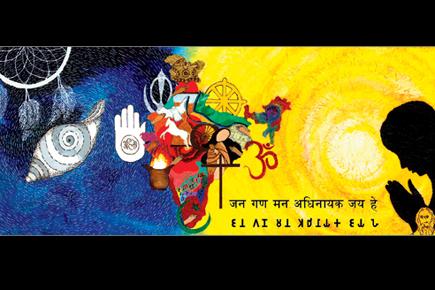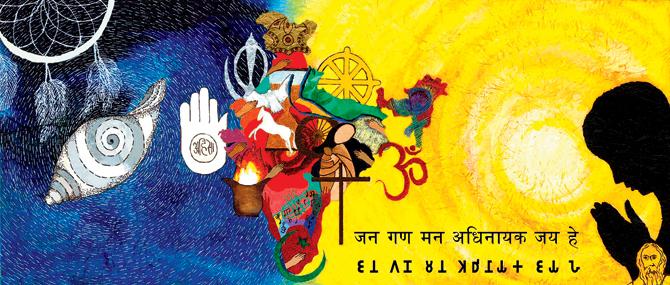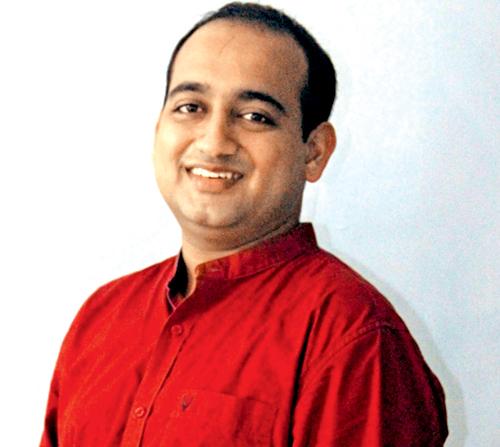Read on how a city-based filmmaker, Akshay Golecha, translated the National Anthem into the 2,200-year-old Brahmi script for various cinema halls

One of the verses of the National Anthem translated in Brahmi script
If you happen to plan your next movie outing at Fort’s Sterling cinema or the Suncity multiplex in Vile Parle, pay close attention to the slides on screen as you stand for the National Anthem that plays before the beginning of the film. As Rabindranath Tagore’s Hindi translation appears on the screen in the Devanagari script, this is accompanied by various circular and square symbols as well as curved lines that resemble stick figures. These unique letters are part of the Brahmi script in Pali language, one of the most ancient scripts of India.

One of the verses of the National Anthem translated in Brahmi script
ADVERTISEMENT
“The script is visible in the Ashokan inscription, so it is more than 2,200 years old. The origin of the script is still debated; one theory suggests that the geometry of constellations might have influenced the script, others suggest Indus or Aramaic scripts to be the parent,” reveals Akshay Golecha, a budding filmmaker, who is responsible for this translated presentation that has also found patronage at Cinemax, Roxy (Charni Road), Matterden (Lower Parel), Chandan cinema (Juhu) and Globus Cinema (Bandra).

Akshay Golecha
How did it happen?
Golecha learnt the script in detail at a two-day Brahmi Script workshop offered by Mumbai University’s Department Of Pali during his Diploma course in Buddhist Studies and Vipassana, back in 2010. He says, “The exercise was my personal endeavour to help spread awareness about the Brahmi script. Not many are aware that Brahmi was used across India and has been the parent to many contemporary Indian and other South Asian scripts.”
While the alphabets of this script are equal to the number of alphabets in Devanagari, the vowels and consonants in Brahmi script have fixed symbols. “If a vowel is attached to a consonant, then the vowel is expressed as a special mark on the consonant. Conjunct alphabets have smaller consonants placed above one and other. The Brahmi script also had representation for numbers. The beauty about this writing system is the relative ease of representing a sound value using simple symbols. With fonts available for computers now, it is also possible to type in Brahmi,” informs Golecha.
However, even with the use of a computer, translating the National Anthem was no cakewalk for the 29-year-old. “The problem was with the lyrics of our National Anthem and the correct pronunciation for the same. For that I referred to AIR recordings. Once the pronunciations were finalised, the translation was also completed. I faced difficulties with conjunct alphabets. After the translation was completed, it was edited by the Department of Pali. They also provided the font and corrected the conjunct Brahmi alphabet for Bhagya, Dravida, Uthkala, Vindhya and Ucchala,” he elaborates. You can look out for two versions, both certified by the CBFC — one of which also features a unique art adaptation showcasing the idea of a secular India.
 Subscribe today by clicking the link and stay updated with the latest news!" Click here!
Subscribe today by clicking the link and stay updated with the latest news!" Click here!







